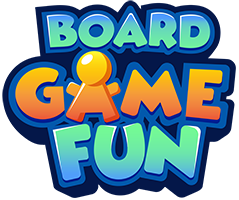How to Play Solitaire
Imagine a quiet afternoon where you have a few moments all to yourself. You want something engaging yet relaxing—no noisy setup, no other players required, just you and a deck of cards. Solitaire is the perfect game to fill that gap. It’s simple to learn, gives your mind a gentle challenge, and can be played almost anywhere you find a flat surface.
In this guide, we’ll walk you through each step—dealing out the tableau, uncovering hidden cards, forming your foundations, and, ultimately, claiming victory. Whether you’re starting from scratch or brushing up, you’ll soon see why Solitaire remains a go-to favorite for millions worldwide.
Brief Game Overview
Solitaire is played by arranging cards into piles (the tableau) and working to build four “foundation” piles by suit in ascending order, from Ace up to King. It’s perfect for adults wanting a simple yet satisfying solo game, and it can be played anywhere you have a flat surface.
Getting Started – What You’ll Need
- A standard 52-card deck (no jokers)
- A flat surface (table, desk, or floor)
- A little patience—enjoy the journey as much as the result!
Budget Considerations
Solitaire is extremely cost-effective—if you don’t already own a deck, standard playing cards are inexpensive and widely available. Prefer going digital? There are plenty of free online or smartphone versions, too.
Step-by-Step Instructions on How to Play Solitaire
Setup
- Shuffle the deck thoroughly.
-
Deal out seven piles in a row to form the tableau:
- The first pile gets one card, the second pile gets two, and so on until the seventh pile has seven cards.
- Turn the top card face up on each pile, leaving the rest face down.
- Place the remaining cards in a draw pile (stock) at the top of your workspace.
Visual Tip
- Organize these piles neatly so you can easily see which cards are face up and what remains face down.

Gameplay
Objective
Move all cards to the four foundation piles, each sorted by suit (♠, ♥, ♦, ♣) in ascending order (Ace to King).
How to Play
-
Check the tableau for moves:
- Move an Ace to an empty foundation pile.
- Place cards onto foundation piles if they follow suit and are exactly one rank higher.
- Move cards among the tableau piles if they alternate in color and descend in rank (e.g., a red 5 on a black 6).
- Draw from the stock when you can’t move any face-up cards in the tableau.
- Flip any newly revealed face-down cards in the tableau as soon as you uncover them.
- Keep building your sequences and foundations until you’ve placed all cards in the foundation piles or can’t make further moves.
Scoring & Winning
While Solitaire can be played casually with no formal scoring, some variations track points for each move or foundation placement. In most cases, “winning” simply means getting all cards into the foundation piles in the correct suit order.
- Optional: If you want to track points, assign positive points for each card moved to a foundation and subtract points for flipping new cards or recycling through the stock.
Secrets to Win Solitaire
- Uncover face-down cards early: The sooner you flip hidden cards, the more options you’ll have.
- Prioritize freeing up columns: An empty tableau pile can hold a King (and its descending sequence), which is often a game-changer.
- Limit unnecessary moves: Sometimes, it’s better to hold off on a move if it blocks your ability to uncover more face-down cards.
Variations & House Rules

- Spider Solitaire uses two decks and allows you to build down in suit.
- Klondike Solitaire is the most common version (the one we’re describing).
- FreeCell offers open “cells” for temporary card storage and is more strategic.
Feel free to experiment with different house rules—like limiting the number of times you can go through the stock—to keep things interesting.
Troubleshooting
- No moves available? Try reshuffling or reevaluating tableau moves before giving up.
- Running out of space? Organize your workspace or play a digital version for a tidy setup.
Frequently Asked Questions
Q: Can Solitaire be played with two decks of cards?
A: Yes, variations like Spider Solitaire require two decks.
Q: What happens if I can’t make any more moves?
A: The game ends, and you can either reshuffle to try again or start a new game.
Q: Are there digital options for Solitaire?
A: Absolutely! Many apps and websites offer free Solitaire games.
Q: What’s the best strategy for winning?
A: Focus on uncovering face-down cards in the tableau and prioritizing moves that open new possibilities.
The Final Shuffle
Solitaire is a timeless classic—easy to learn but with enough depth to keep you engaged. With a bit of practice, you’ll uncover your personal strategies, improve your chances of winning, and discover how relaxing a solo game can be.
We’d love to hear how your Solitaire journey is going! Share your progress or subscribe to our newsletter for more beginner-friendly guides!


